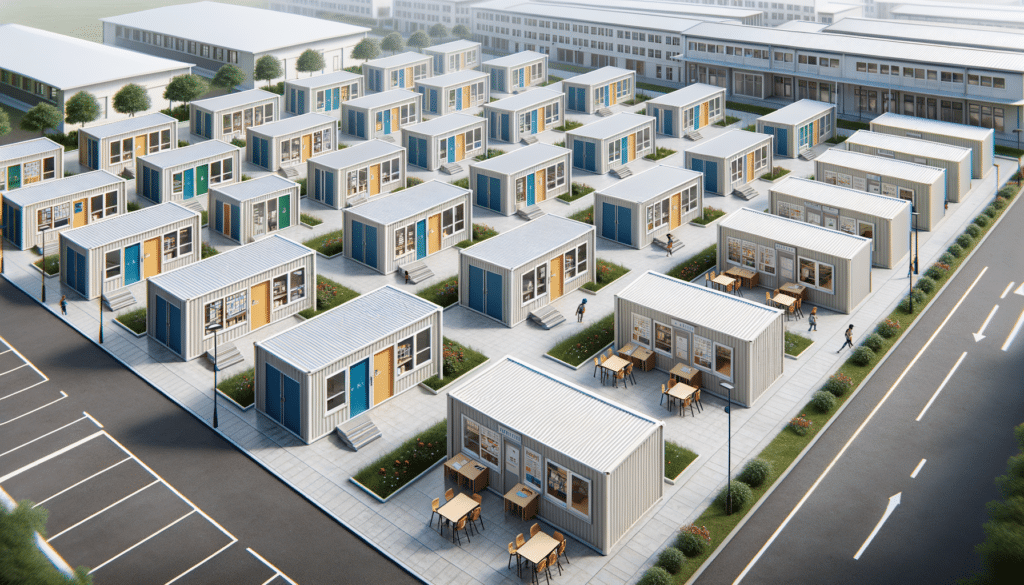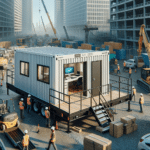Introduction to Temporary Classroom Units
In the ever-evolving landscape of education, flexibility is key. Temporary classroom units serve as a vital solution for schools facing unexpected enrollment surges, construction projects, or emergency relocations. These units, often referred to as modular school cabins, provide a quick and efficient way to expand educational facilities without the need for extensive construction. By offering a seamless transition, they ensure that learning continues uninterrupted, which is crucial in maintaining educational standards.
Temporary classrooms are not merely a stopgap measure; they are designed with the same considerations for comfort, safety, and learning efficacy as permanent structures. Their adaptability allows schools to respond swiftly to changing needs, making them an invaluable asset in educational planning. As we delve deeper into the world of modular school buildings, we will explore how these structures are designed, deployed, and repurposed to support educational goals.
The Design and Deployment of Modular School Buildings
Modular school buildings are crafted with precision and care, ensuring they meet the diverse needs of educational institutions. The design process begins with understanding the specific requirements of the school, such as the number of students, the type of activities to be conducted, and the duration of use. These factors influence the size, layout, and features of the modular units.
Once the design is finalized, the construction of these units takes place off-site in a controlled environment. This method not only reduces construction time but also minimizes disruptions to the school’s daily operations. The prefabricated modules are then transported to the site, where they are assembled quickly and efficiently. This streamlined process allows schools to adapt to changing circumstances with minimal delay.
- Quick assembly and disassembly
- Customizable design to fit specific needs
- Environmentally friendly construction methods
Furthermore, modular school buildings are designed to be energy-efficient, incorporating sustainable materials and technologies. This commitment to sustainability not only reduces the environmental impact but also aligns with the growing emphasis on green building practices in education.
Benefits of Prefab Classrooms in Education
Prefab classrooms offer numerous advantages that make them a popular choice for educational institutions worldwide. One of the most significant benefits is their cost-effectiveness. By reducing construction time and labor costs, prefab classrooms provide a budget-friendly alternative to traditional building methods. This financial efficiency allows schools to allocate more resources to educational programs and student services.
Another notable advantage is the flexibility that prefab classrooms offer. Schools can easily expand or reduce their capacity by adding or removing modules as needed. This adaptability is particularly beneficial in areas with fluctuating student populations, ensuring that schools can always accommodate their students comfortably.
- Cost-effective construction
- Flexible and adaptable design
- Reduced environmental impact
Prefab classrooms also contribute to a reduced environmental footprint. The controlled manufacturing process results in less waste, and the use of sustainable materials further enhances their eco-friendliness. As educational institutions increasingly prioritize sustainability, prefab classrooms align with these values, offering a responsible and forward-thinking solution.
Challenges and Considerations in Using Temporary Classrooms
While temporary classrooms offer numerous benefits, there are challenges and considerations that schools must address to maximize their effectiveness. One of the primary concerns is ensuring the quality and durability of the structures. Although designed for temporary use, these classrooms must withstand the rigors of daily school life, including weather conditions and heavy foot traffic.
Additionally, schools must consider the integration of temporary classrooms into their existing infrastructure. This includes ensuring connectivity for technology, accessibility for all students, and alignment with safety regulations. By addressing these challenges, schools can ensure that temporary classrooms provide a seamless and effective learning environment.
- Ensuring structural quality and durability
- Integrating with existing infrastructure
- Meeting safety and accessibility standards
Despite these challenges, the benefits of temporary classrooms often outweigh the drawbacks. With careful planning and execution, schools can overcome these hurdles and leverage temporary classrooms to enhance their educational offerings.
Conclusion: The Future of Temporary Classrooms in Education
As educational needs continue to evolve, temporary classrooms will play an increasingly important role in providing flexible and adaptive learning environments. Their ability to support schools during periods of transition and growth makes them a valuable asset in educational planning. By embracing the potential of modular school buildings and prefab classrooms, schools can ensure that they are prepared to meet the challenges of the future.
In summary, temporary classrooms offer a practical and effective solution for schools facing fluctuating enrollment and infrastructure needs. Their adaptability, cost-effectiveness, and sustainability make them a smart choice for educational institutions looking to enhance their capacity without significant investment in permanent structures. As we look to the future, the role of temporary classrooms in education will undoubtedly continue to expand, offering new opportunities for innovative teaching and learning.


